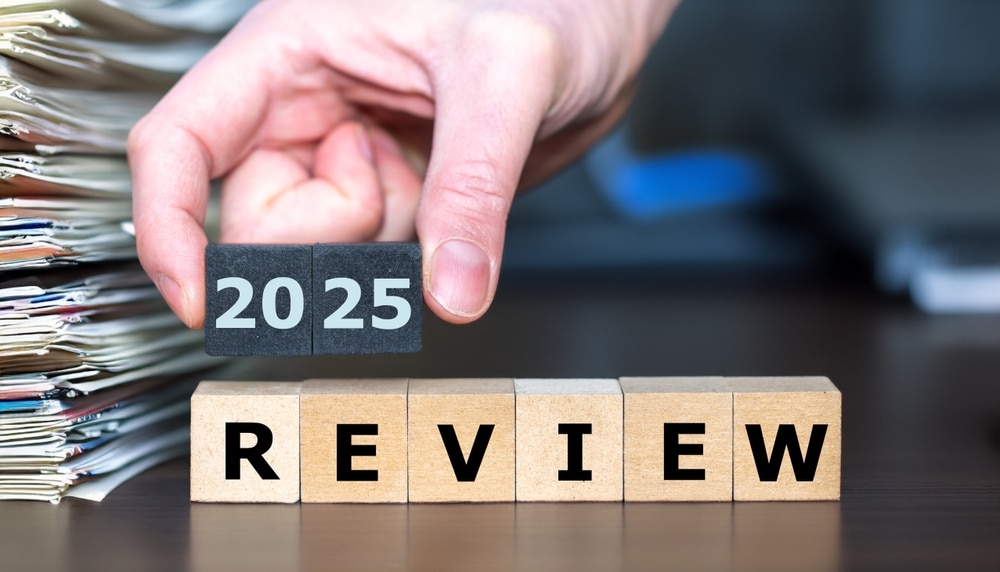With its own unique set of OHIP billing codes, special visit premiums, and critical care scenarios that differ from other areas of medicine, billing for medical services in an emergency department (ED) can be challenging.
To help you better understand these complexities, our billing team has answered your most frequently asked questions, covering how to optimize billings for emergency assessments and procedures and how to avoid common errors.
Assessment and Consultation Codes in the Emergency Department
What codes can be billed with the consultation H065/H055? For example, can we bill a Form 1, critical care, and procedures such as fracture or suturing?
Yes, you can bill Form 1 (K623) alongside a consultation (H055/H065) if the diagnoses differ significantly. Ensure that the diagnostic codes used are specific; avoid using vague codes such as 799 or 796. For instance, billing the consultation with 781 and the K623 with 300 is appropriate.
Consultations can also be billed with critical care on the same day for the same patient, provided the times for both visits are documented separately. For example: “H065 at 2:00 p.m. for headache. Called back STAT at 4:30 p.m. for critical care following seizure”. Each visit should have a distinct diagnosis. In these circumstances, you will almost certainly be asked for documentation to prove your times.
Additionally, consultation codes can be billed alongside procedures such as fractures or suturing. If premiums E412/E413 apply, ensure that they are included.
What is the difference between H131 and H132?
H131 is used for minor assessments, often when a patient presents with a straightforward issue that requires a focused history and examination.
H132 is used for comprehensive assessments, particularly when the patient has a complex issue that requires a thorough history, multiple system examination, and detailed medical decision-making.
Use H132 when the visit involves a higher level of complexity.
What is H133, and when is it appropriate to bill?
H133 is billed when a patient is observed in the ED for a minimum of 4 hours under your care. It’s used when the patient needs ongoing monitoring but is not admitted to the hospital.
Can I bill both an emergency department assessment and a procedure on the same visit?
Yes. If you perform a procedure (like suturing or incision and drainage) in addition to your assessment, you can bill both, assuming both services were medically necessary and documented.
What if another physician sees the same patient in the ED on the same day?
Each physician may bill their own appropriate code as long as:
- They are from different specialties.
- They provided different services.
- Each encounter is medically necessary and documented.
If I see a patient in the ED and later admit them, can I bill for both the ED visit and the admission?
Yes, if you’re the admitting physician and both services are medically necessary and clearly documented you would bill:
- H131/H132 for the emergency department assessment.
- H105 (or appropriate admission code) for the hospital admission.
Procedures and Additional Services
Can you bill H-prefix codes and K-prefix codes together?
You can bill ED H-prefix assessments (e.g., H065, H123) with mental health codes (e.g., K005, K015, K623) if they have significantly different diagnoses. Avoid using vague diagnostic codes like 799 or 796. While K623 is not covered in the Schedule of Benefits, K015 and K005 can be corrected or argued retroactively (refer to pages GP58 and A17 in the Schedule of Benefits).
However, you cannot bill ED assessments (H065, H123) with any special visit premiums, including H-prefix or K-prefix special visit premiums. In those cases, you must use general assessments (e.g., A005, A003).
What codes should I use for suturing or minor wound repair?
In the ED, you would bill the following laceration codes: Z154, Z175, Z176, Z177, Z179, Z190, Z191 and Z192. Additionally, you can bill the G224 for local anesthetic.
What is the billing code for joint injections or aspirations?
G384 for major joints (e.g., knee, shoulder)
G385 for minor joints (e.g., wrist, elbow)
Can I bill for interpreting diagnostic tests in the ED?
You can bill for interpreting diagnostic tests only if you are formally interpreting the results and providing a written report. Otherwise, these services are typically included in the assessment.
Special Visit Premiums & Time-Based Billing
What are the most common billing errors that ED physicians encounter?
One of the most common mistakes we see with our physicians is using the wrong special visit premiums for a specific time or day. Beyond this, doctors often forget to add them to their claims, leaving money on the table.
The most common rejection codes for critical care and procedure codes seen by physicians are M4 errors, which physicians receive on the error report if the maximums for those codes have been exceeded.
For H-prefix assessment codes, a common error that physicians sometimes run into is billing a weekend and holiday assessment on a weekday or vice versa, resulting in a V4 error code.
Lastly, we see physicians not challenging some of the rejections they receive. Rejections can be fixed with a manual review and by providing supporting documentation. For example, including multiple fractures on different limbs or when a physician provides an assessment and critical care on the same day for the same patient.
DoctorCare provides error reconciliation support to help ensure you don’t leave revenue behind. If you’d like to learn how we can help reduce billing errors and recover lost income, reach out to our team for a free billing assessment.
Are special visit premiums (SVPs) submitted as shadow billing or outside of the AFA?
All billing done within the ED can be billed through the AFA using H-prefix and K-prefix special visit premiums.
“Calls to the floor,” also known as “shadow billing,” are considered fee-for-service or solo billing. This applies to critical care only and is billed as inpatient services with C-prefix special visit premium codes. These are not billed through the AFA, and you are entitled to 100% of the service fee. Such billing must be done separately from your group billing, either as locum billing or through a separate “code blue group” managed by the ER.
What special visit premiums can be billed in the emergency department?
Depending on the time of day and day of the week, you may be eligible for:
- K990 – Evening (5 p.m. – midnight)
- K991 – Weekend or holiday (7 a.m. – midnight)
- K992 – Night (midnight – 7 a.m.)
These are billed in addition to your assessment or procedure codes when services are rendered during these periods.
Refer to our ER Special Visit Premiums quick reference guide, for the full list and best practices on special visit premiums billing.
Can I bill a special visit premium for every patient I see during those hours?
No. The special visit premium is billed once per eligible patient encounter, not per individual service. It’s also not billable if you are already scheduled to be on-site (e.g., as part of a shift).
If a visit starts before midnight and ends after, how do I bill?
Only one assessment per 24-hour period can be billed per patient. For billing purposes, the visit time is based on when the service begins.
Patient Transfers, Follow-Up & Coverage Scenarios
Can I bill for a patient if I’m covering for another physician?
Yes. If you are covering for another physician and providing direct patient care, you can bill your own assessment or procedural codes. Ensure your documentation supports your involvement and clearly states that you were the treating physician during the encounter.
Can I bill for follow-up visits in the ED?
If the patient returns and is seen by the same physician within 24 hours, a second assessment cannot be billed. However, if a different physician sees the patient or if more than 24 hours have passed, a new assessment may be billable.
Can I bill an emergency department visit if the patient was referred from a walk-in or family practice?
Yes. If a patient is referred to the ED and you assess them, you can bill the appropriate emergency department assessment code. If you’re a specialist and the referral qualifies as a consult, a consultation code may be more appropriate. In this case, general practitioners would use the H065 and other specialties would use the H055 instead of the H1* codes used for regular ED visits.
Common Scenarios and Billing Tips
What if I provide care as part of a team in the ED?
Only the physician who personally provides the assessment or procedure can bill for the service. If you’re part of a multidisciplinary team, make sure it’s clear in your notes what part of the care you were directly responsible for.
How do I bill for trauma cases or resuscitation in the ED?
If you are actively involved in resuscitation efforts for at least 20 minutes, you may be eligible to bill resuscitation codes. This must be clearly documented, including the start and end times, as well as the interventions performed. Resuscitation codes used in the ED are: G521, G523, G522, G395, and G391.
What if I provide multiple services to the same patient?
If services are separately billable and not considered part of the same procedure or bundled service, you may bill them together. Common examples include:
- H102 (Comprehensive Assessment) + Z154 (Minor Laceration) + G224 (Local Anesthetic)
- H133 (Observation) + procedure if patient requires monitoring and intervention
Billing Models and Administrative Support
Does DoctorCare do billing for individual doctors in an emergency department, or does it have to be for the whole group?
We handle both scenarios. If the ED operates under an Alternate Funding Arrangement (AFA), then the ED is our client, and we bill for every doctor in that ED. If the ED operates under Fee-for-Service (FFS), individual doctors are responsible for their own billing; we refer to these as “solo clients.” The decision between AFA and FFS is made collectively by the ED group. Having more clients within a given ED group enhances our visibility into claim submissions and streamlines the billing process for everyone involved.
I don’t use an EMR and submit my billings on day sheets. How do you work with this type of billing?
We accommodate various billing submission methods. We ask that you submit your billing sheets promptly, ideally on a weekly basis, unless you have time-sensitive codes. Emailing your billing sheets is the fastest and most secure method. However, we also accept submissions via fax, mail, or courier, which can be arranged on a case-by-case basis.
If you send us original documents through the mail or drop them off, you can request their return or arrange for pick-up. Otherwise, we securely shred any printed copies after three months.
I receive a lot of errors from my billing. Can DoctorCare help with this?
We can! We will reconcile every rejection you receive from the MOH, from error reports to your remittance advice. Most of this is done automatically, with minimal involvement from the doctor. We will reach out if we need supporting documentation or if any resubmission requires input (such as a code change).
What is the benefit of having DoctorCare oversee our department’s billings?
The primary and most significant benefit is reducing the administrative burden on you and your team, enabling you to focus more on delivering exceptional patient care.
Additionally, by allowing us to manage your billing, you will minimize errors and rejections and optimize your billing to maximize revenue potential. Our billing specialists will regularly review your billing to identify opportunities to maximize revenue.
Additional Resources
We have created additional resources to help doctors navigate the complexities of Emergency Department billing:
A Guide to ER Special Visit Premiums
We’re happy to help!
Contact us today to book a meeting with one of our expert team members!



